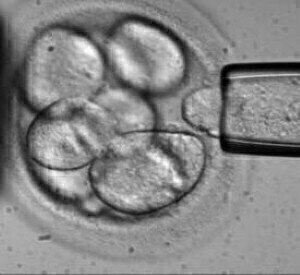Bioanalytical
New technique can measure internal cell temperatures without altering metabolism
May 28 2012
A new technique has been created by researchers at the Institute of Photonic Sciences (ICFO) which can measure internal cell temperatures without altering their metabolism.
The new discovery could be useful in distinguishing healthy cells from cancerous ones, and could also help scientists learn more about cellular processes. This is because temperature controls most of the cell’s life processes, such as splitting and metabolism, and so being able to accurately measure temperatures is likely to open up several new corridors of research.
This is something a European research team believe they have achieved. Led by the Institute of Photonic Sciences (ICFO), they have published a non-invasive method that offers quicker, more precise data from measuring intracellular heat from green fluorescent proteins (GFP). The results have been published in the journal Nano Letters.
Romain Quidant, ICFO researcher and study coordinator, explained to SINC: "A unique characteristic of our method is that it does not alter any cellular process."
They have achieved this because this method does not need to be inserted into any molecules or any other synthetic nano-object that is sensitive to the internal temperature.
There are several outcomes that could come of the new method, such as gaining a better understanding of cellular processes. Additionally, there is the possibility of gathering information on intracellular temperature for use in "differentiating normal cells from cancerous ones in a quick, non-invasive manner" explained Sebastian Thompson Parga, ICFO researcher and co-author of the project.
In this study, biology uses physical measurements of energy transmission to study processes such as gene expression, metabolism and cell splitting to create the so called 'fluorescence polarisation anisotropy' (FPA). This technique allows the difference in polarization between light that fluorescent molecules receive, and that which they emit later, to be measured. As Quidant explains: "this difference in polarization (anisotropy) is directly connected to the rotating of the GFP molecules and therefore with temperature".
The researchers will now work on improving the sensitivity before releasing it into research laboratories.
Posted by Ben Evans
Digital Edition
Chromatography Today - Buyers' Guide 2022
October 2023
In This Edition Modern & Practical Applications - Accelerating ADC Development with Mass Spectrometry - Implementing High-Resolution Ion Mobility into Peptide Mapping Workflows Chromatogr...
View all digital editions
Events
May 05 2024 Seville, Spain
May 15 2024 Birmingham, UK
May 19 2024 Brno, Czech Republic
May 21 2024 Lagos, Nigeria
May 23 2024 Beijing, China














